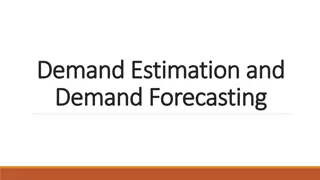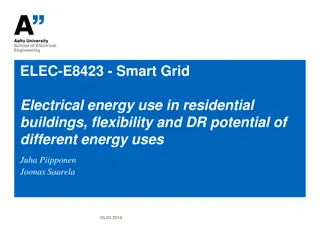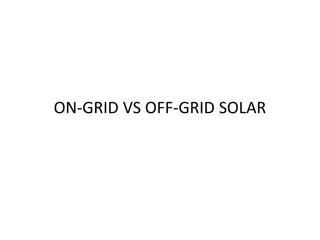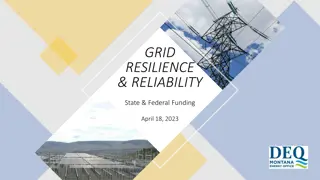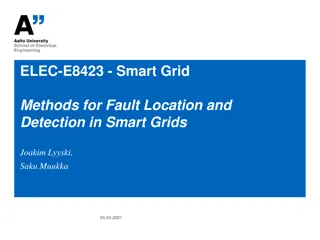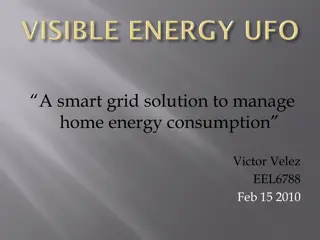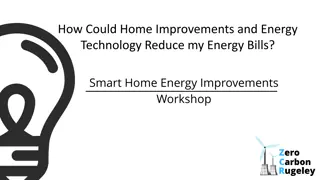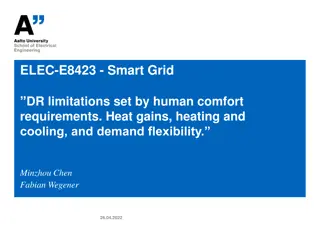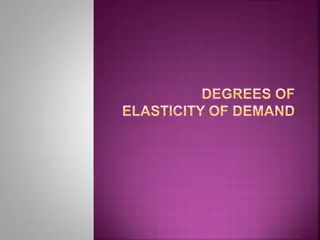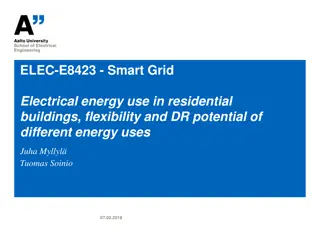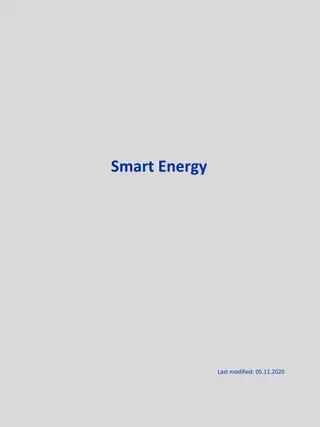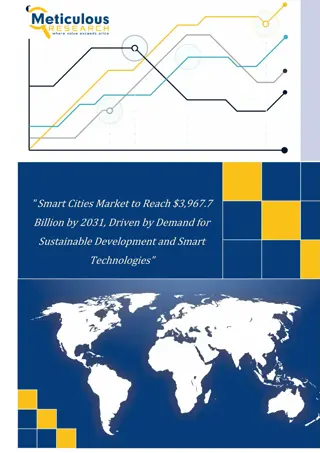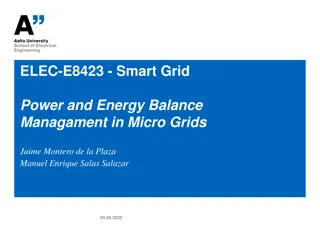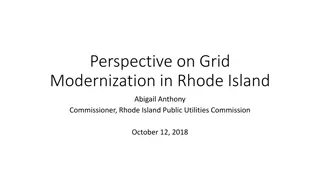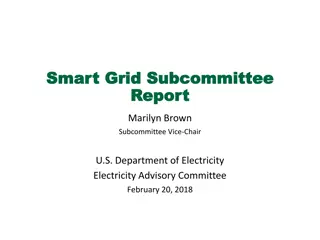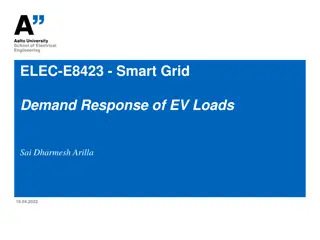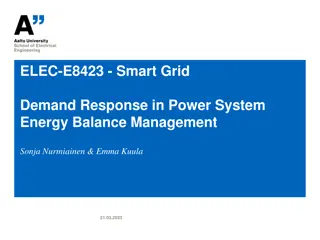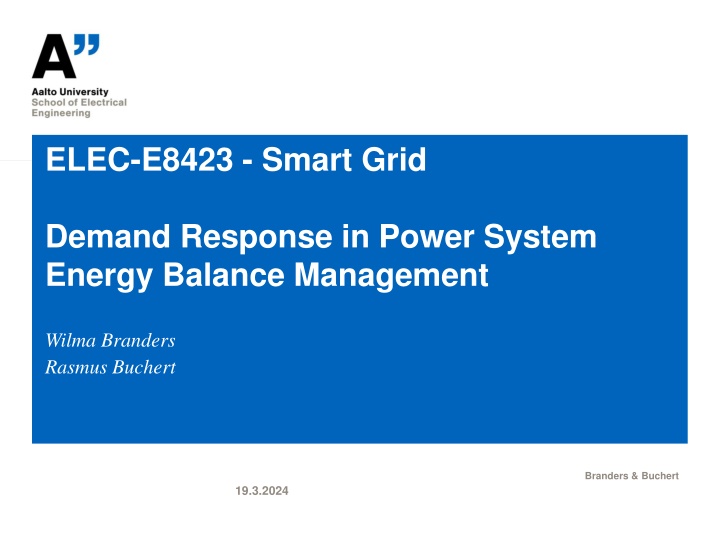
Smart Grid Demand Response in Power System Energy Balance Management
Energy transition necessitates increased flexibility in power systems. Demand response solutions address this need by shifting loads and improving grid efficiency, security, and flexibility. Challenges such as technical requirements, consumer engagement, and integration of renewable energy must be overcome for successful implementation. The potential benefits of demand response include enhanced grid stability, reduced electricity consumption, and alignment with sustainability goals like the Net Zero 2050 scenario.
Download Presentation

Please find below an Image/Link to download the presentation.
The content on the website is provided AS IS for your information and personal use only. It may not be sold, licensed, or shared on other websites without obtaining consent from the author. If you encounter any issues during the download, it is possible that the publisher has removed the file from their server.
You are allowed to download the files provided on this website for personal or commercial use, subject to the condition that they are used lawfully. All files are the property of their respective owners.
The content on the website is provided AS IS for your information and personal use only. It may not be sold, licensed, or shared on other websites without obtaining consent from the author.
E N D
Presentation Transcript
ELEC-E8423 - Smart Grid Demand Response in Power System Energy Balance Management Wilma Branders Rasmus Buchert Branders & Buchert 19.3.2024
Introduction Energy transition leads to: Increasing amount of variable renewable production Decreasing amount of flexible conventional production Need for more flexibility Solution: Demand response Branders & Buchert 19.3.2024 Page 2
Demand Response and Load Management Shiftable vs. uninterruptible loads Industrial, commercial and residential loads Branders & Buchert 19.3.2024 Page 3
Drivers and Barriers Drivers Grid efficiency, security and flexibility Barriers Technical requirements Consumer engagement Electrification, increased consumption Forecasting challenges Security concerns Integration of renewable energy Market and regulatory framework Market efficiency Branders & Buchert 19.3.2024 Page 4
Demand Response Flexibility and Capacity DR availability at times of greatest flexibility need and share of total flexibility Branders & Buchert 19.3.2024 Page 5
Frequency Control Balancing Power Electricity supply = electricity demand at all times Balance is indicated by frequency Nominal value of 50.0 Hz 0.2 Hz variation already detrimental Centralized and decentralized DR 07.02.2018 Page 6
Reserve Products for Balancing Power Branders & Buchert 19.3.2024 Page 7
Conclusions Demand Response is defined as: Changes in electric usage by end- use customers from their normal consumption patterns in response to changes in the price of electricity over time, or to incentive payments designed to induce lower electricity use at times of high wholsesale market prices or when system reliability is jeopardized DR enables imporved grid efficiency, flexibility and security by shifting loads -> DR balances power Much greater efforts are needed in DR to align with the Net Zero 2050 scenario 500 GW of DR capacity by 2030, 10x more than in 2020 Branders & Buchert 19.3.2024 Page 8
References Chis, A., Rajasekharan, J., Lunden, J. & Koivunen, V. (2016). Demand response for renewable energy integration and load balancing in smart grid communities. In 2016 24th European Signal Processing Conference (EUSIPCO). [Online]. 2016 IEEE. pp. 139 1427. DOI: 10.1109/EUSIPCO.2016.7760483 Fingrid. (2022). Reserves and Balancing Power, Reserve Produts. Available at https://www.fingrid.fi/en/electricity- market/reserves_and_balancing/#reserve-products Hukkalainen et al. (2020). Detailed plan of the Espoo smart city lighthouse demonstrations. SPARCS. IEA. (2023). Demand response availability at times of greatest flexibility need and share of total flexibility under the Net Zero Scenario, 2020 and 2030, IEA, Paris https://www.iea.org/data-and-statistics/charts/demand-response-availability-at- times-of-greatest-flexibility-need-and-share-of-total-flexibility-under-the-net-zero-scenario-2020-and-2030, IEA. Licence: CC BY 4.0 Morales-Espa a, G., Mart nez-Gord n, R. & Sijm, J. (2022). Classifying and modelling demand response in power systems. Energy, Vol. 242, 122544. ISSN 0360-5442. DOI: 10.1016/j.energy.2021.122544. U.S. Department of Energy, Office of Electricity. (2023). Demand Response. Available at https://www.energy.gov/oe/demand-response Branders & Buchert 19.3.2024 Page 9

